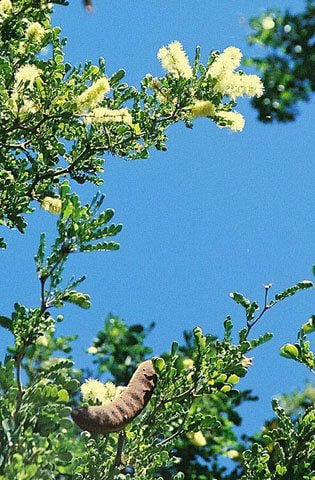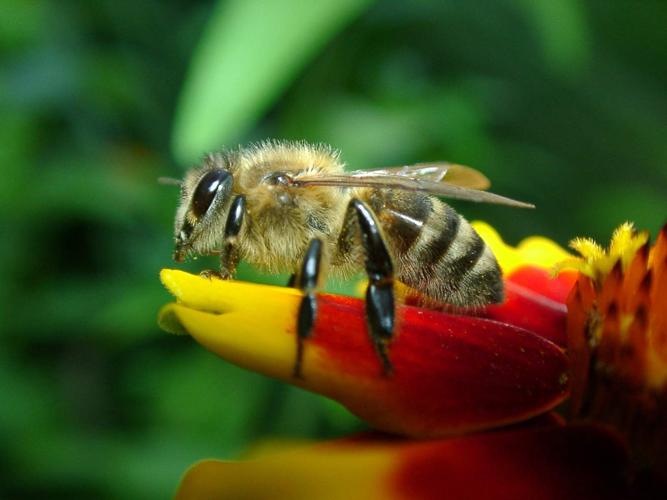Q: We have some old mesquite trees and palo verde trees near our walking lanes. There are old clay unsealed sewer pipes nearby at a depth of about 4 feet. Are we at risk for sewer problems? How far should any tree be from a lane with old sewers? As for new trees, we were thinking of planting more of the above but not near the walk lanes. Desert willows were also suggested, but they may need more water. Do you have any other suggestions?
A: Your sewer pipes are at risk with tree roots nearby. Typically, mature tree roots extend 2 to 3 times the width of the crown so it is wise to give any potential obstructions such as sewer pipes, sidewalks and houses enough room. Since the trees are old and so are the pipes, you might wait and see if a problem presents. It is certainly a good idea to have the pipes inspected or monitor the water use rate if you suspect a leak. There are quite a few choices for low water use trees. The decision usually begins by measuring the space you have available both below ground and above ground. The mature size of a tree should be accounted for in any plan to plant. Desert willows are a low water use tree and a good one if your space isn’t large enough for a mesquite tree. Other species to consider include white thorn acacia, ironwood and Texas ebony. Your plan should also include irrigation even though you are planning to go with a low water use tree. Even native desert species need some water.
Q: I live in Sierra Vista and have a small peach tree, about 3 to 4 years old. Last spring it bloomed for the first time and set about a dozen peaches. When the fruit was a bit smaller than golf ball size, I noticed each one had a small hole and was oozing a clear sap-like substance. I assume an insect of some kind that had bored into the fruit caused it. Each peach shriveled up and fell off the tree. With what should I treat my tree and when to prevent this again?
A: Peaches and other fruits such as pomegranates are potential food for a few different insect species. Based on your description, I suspect one of the larger plant bugs we refer to as leaf-footed bugs. They have piercing-sucking mouthparts that penetrate the fruit to suck out the sap. Their saliva has a toxin in it that injures the fruit. The resulting wound is also an entry point for disease and that is possibly what caused the fruit to shrivel and fall from the tree. Treating for this insect is challenging because as adults they are fast moving and can fly. The insecticides used are contact poisons so you need to know where they are and hit them directly with the treatment. There are organic and conventional insecticides available for this pest.
The best time to treat for them is when they are young. The young are yellow-orange in color and usually hang out in a group. Since you have a small tree this will be easier than if you had an orchard of trees to monitor.
The other thing you can do is look for eggs on your tree and remove them before they hatch. This hatch occurs in a week or less after they are laid so monitoring once a week is critical to removing them before they emerge. The eggs are laid in a row along a stem or the midrib of a leaf and are golden-brown in color. Since these insects also feed on citrus and pomegranates, it is good to monitor those plants as well if you have them nearby.
Q: I live in the Tucson Foothills area where I planted three San Pedro cactus near an outdoor wash area six years ago. During the cold months, the temperature can easily drop below freezing at least seven days each winter. Since it is getting increasingly hard to cover and uncover each 5-foot-tall San Pedro cactus, can I leave the green exterior frost protection drop cloths purchased from the Home Depot over each San Pedro cactus from late December through mid-February without damaging these plants? What time frame do you recommend for covering and protecting outdoor San Pedro cactus from frost damage?
A: You can certainly leave the frost cloth on if it allows light to get through. The general time frame for frost danger in our area is between mid-November and late February. Of course this is just a guideline. During the early and late ends of this range the likelihood of frost is closer to 10 percent and it is greatest between mid-December and mid-January. I recommend covering sensitive plants when local weather authorities predict danger of frost. As I am sure you know, some winters are fairly mild and you can get away with not covering your plants and then we have colder years like 2011 and this year to keep us on our toes.
Q: I was finally sitting outside last week with my soda and had up to five aggressive bees wanting my beverage. Yikes! They even have a memory cause the next day without my beverage, they were still checking me out! I also noticed them in my recycle bin. I don’t remember this happening before. Is anything different going on?
A: The main thing going on this year is a slightly colder winter. Honeybees overwinter in their hives to keep warm and feed on the honey they stored during the warmer months. On nice days, they are as likely to get outside as you are and they will also partake in a sweet beverage. Since not as many flowering plants are available in the winter, you may see honeybees in recycle bins where food and drink residues may be found in addition to having some competition for your beverage.
As you exclaim, “careful man, there’s a beverage here,” be reminded that we all have to eat and a sugary beverage is a food source for a bee.






